On Fastenings and Fixings
I think this is worth a visit. Some people suggest to others that Paul Sellers hates machines, never uses them and is a skilled craftsman who insists on using only traditional methods. It’s not true, none of it. I am skilled though, and it is my skill that equips me to do things other woodworkers and especially machinists might shy away from. It’s my work also that sets me apart simply because I never mass-make anything and never use mass-making equipment beyond my bandsaw and a drill-driver now and then. I have a drill press that stands idle for a month or so and I might drill a couple of holes with larger Forstner drills on occasions. Mostly it’s not on my radar for use.
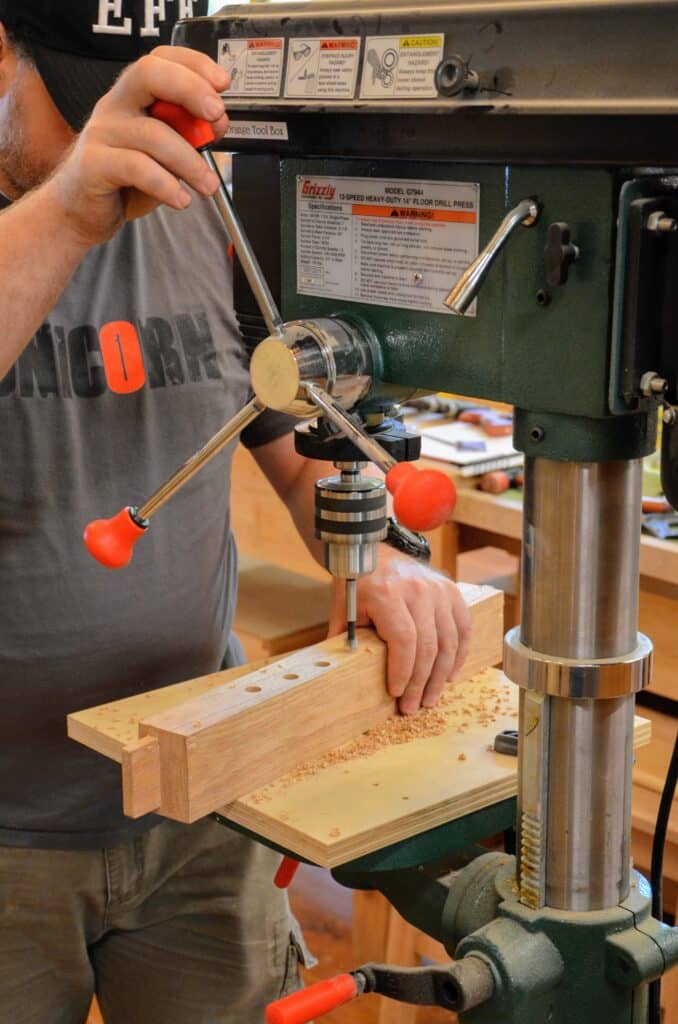
I use hand tools for my joinery, and in general, all of my work is indeed jointed with traditional joints, but then again not always are my joints traditional or perhaps not traditionally applied. I think that the braces I developed on the inside corners of my dining table leg are an excellent example. I have never seen this done by anyone nor seen its application used anywhere. On the other hand, I used fastenings throughout my new router plane and include threaded inserts in a couple of them to test them out. I liked the hold they gave me.
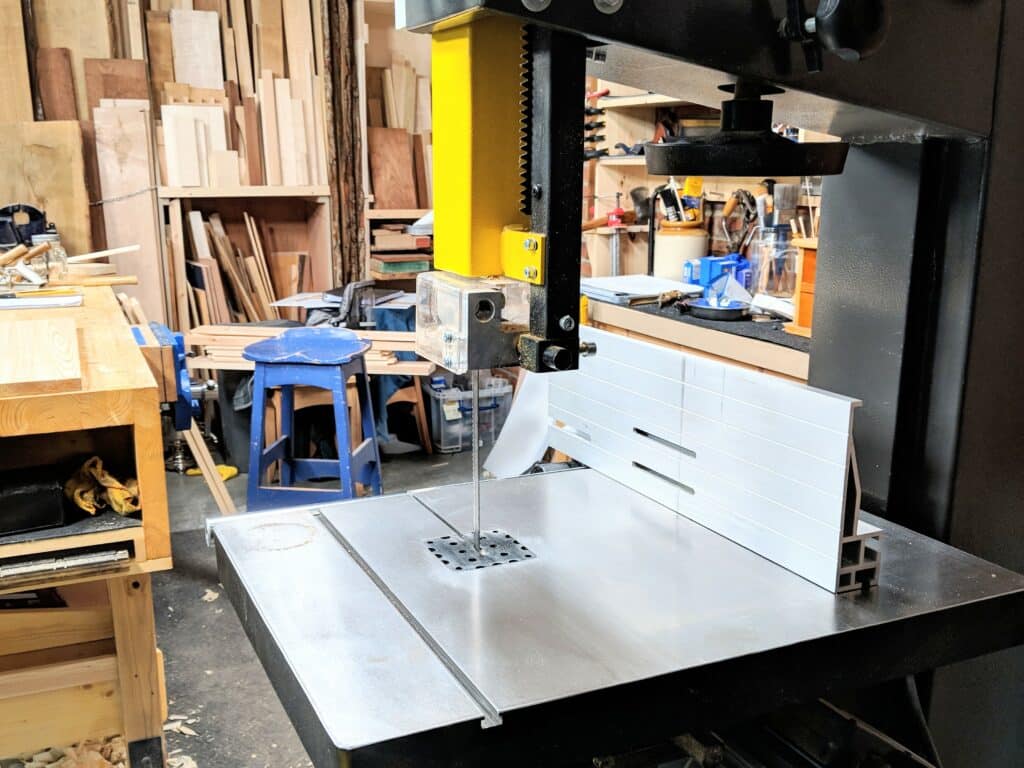
For my prototypes, I often use wood screws to pull parts together and to actually take off my angles from. See this blue bench stool! It has not a single joint throughout its construction yet back ten years or so ago I screwed and glued it together as a prototype. I then painted it to make it look nicer and I have been using it every single day since it first went together. It works just fine and in the scheme of prototyping, I had it together in under one hour just using ordinary woodscrews into the end grain of the rails. Is it safe? It is. Any of the joint lines [parted? No, not so far.
Whereas I most likely would not make a fine piece of furniture with just screws and no joinery, I have no problem using screws for elements such as turn buttons, drawer support rails and many other appropriate places in a piece. But I am occasionally asked for an alternative method when someone simply wants to not use screws or fastenings. I am not interested in this nor providing a time-consuming answer for someone working ore as a purist for pride’s sake. Time and interest disallow this for me.
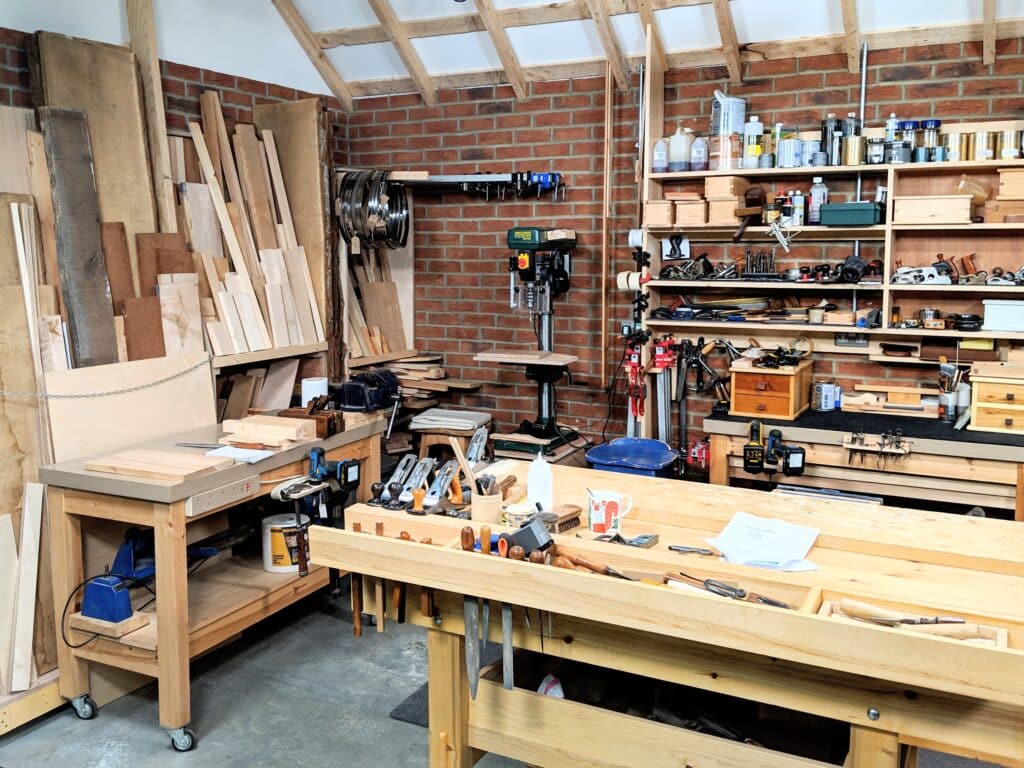
I think wood screws and even the recent developments are quite the remarkable invention. Spanning three centuries, these ubiquitous developments are forever evolving into ever greater products and perhaps this is where there might be a departure for me from the mainstream user. Whereas almost every woodworker I know uses woodscrews for speed and joining, I use screws solely for the pulling power they have to unite components either permanently or temporarily and also as a means of temporarily ‘clamping’ parts until the glue used between the parts has cured and secured the elements that will usually but not always rely on the glue alone for the union. Think laminations and such; where glue is used with screws, the screws can most often be removed and reused elsewhere in additional work.
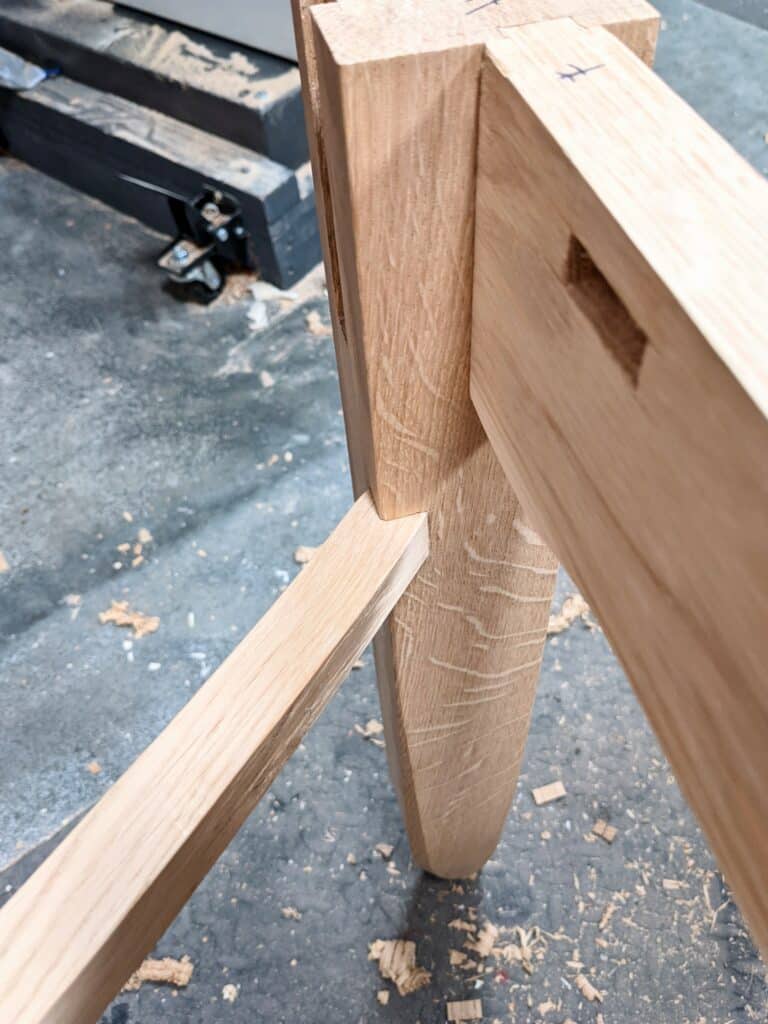
There is also the appropriate use of screws depending on the work in hand. I most like would not use mortise and tenon joinery for a chicken coup or a dog kennel. Screwed components are more than appropriate and very adequate too. Shelves in my garden shed do well with screwed rails undergirding the shelves themselves as do brackets screwed together with an angled corner brace.
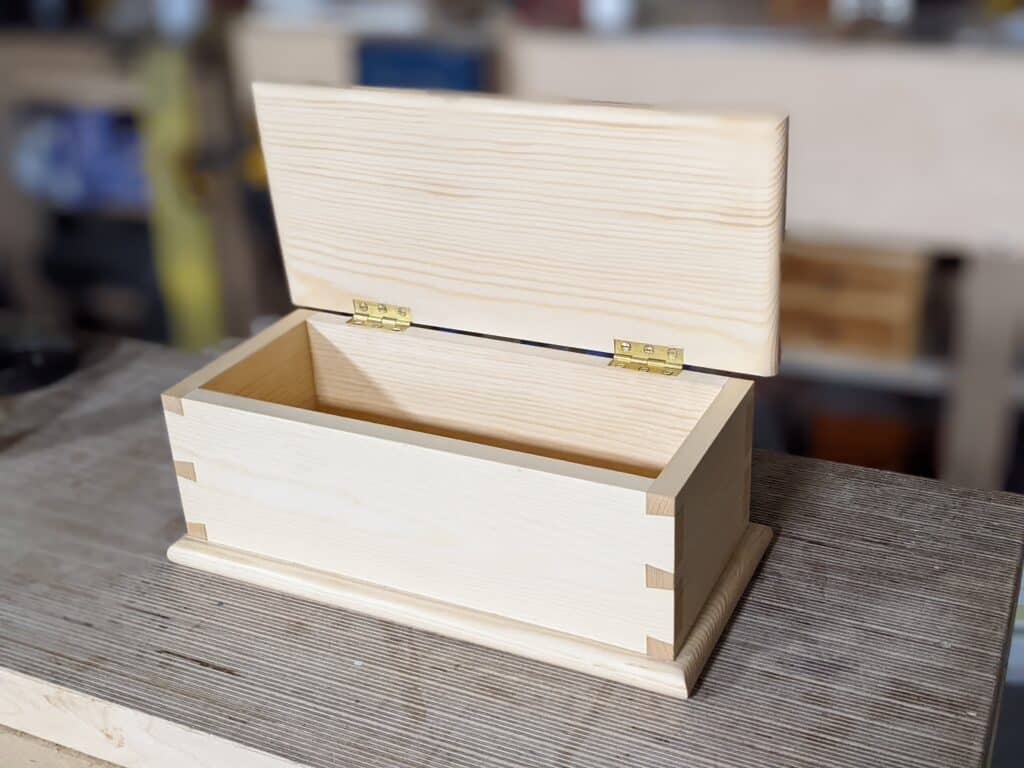
I am far from a purist in my work. I do not pursue the reputation of being so and you will never see me in any kind of reenactment or trying in an endeavour to take people back to before the Industrial Revolution. Pole lathes in the woods and in the workshop and for those who like to turn that way, I think that they have their place as do sandstone grinders treadled into action by two strong legs or an apprentice’s arms. Most likely there are many ways to get rid of electric power on even machines like bandsaws to replace them with treadles or winding gears, but they are inefficient and impractical compared to the working properties of a simple electric motor with a pulled system for speed and power change. All in all, there is good reasoning behind woodscrews and fastenings and then joinery. I have always relied on and accepted both. I would never sell a piece of furniture held together with just screws though.



Interesting to hear your thoughts on the use of power, and your suggestion that you do not wish to take people back to before the industrial revolution. I actually think that we will see a significant movement in that direction over the coming century. There is simply nothing that comes close to the energy density, or the energy return on energy invested, of fossil fuels (oil, mainly). I think we’ll struggle to replace that and in the timescales required. I envisage that we’ll see a complete winding down of industry as we know it and we’ll move to a situation where we have to use our remaining fossil fuels and any new energy with great care and efficiency. To the extent that we’ll have to choose between those things we do by hand and those that we deploy the intensity of horse power. The hyper-tech future of self driving cars, rockets to mars and free fusion energy seem to me to be utter hubris, and certainly not achieveable in the 8 years (8 years!!!) that we are required to wean ourselves off of fossil fuels. I can well imagine the workshop of the future looking like one in the not too distant past (but with significantly better insulation!), and I think it’s quite a good thing. An interesting question for people to consider is what their workshops would look like with very minimal fossil fuel input? Would a tablesaw, router table, jointer etc. be a part of that? I highly doubt it. Let’s be honest, too, for us hobbyists it is an extremely lavish use of resources.
Splitting of water to provide hydrogen (and oxygen) using green electricity could replace some fossil fuels as an energy store rather than relying on batteries.
Often machines are used to replace skill however, and are not necessarily more efficient for none batch production. But i don’t see us going back to for example to felling axes and pit saws.
I’m fairly cynical of the concept of hydrogen splittng as a replacement. I mean, it might work, but the energy return on energy invested to get any return – in my opinion – will never make it a worthwhile process. It’s heavily reliant on fossil fuels (in either construction of plant/factory, machinery etc and transportation to location, alongside the splitting process).
I agree, I don’t think we’ll go back to felling axes and pit saws for the most part, just that there’ll be a massive drop in productivity in line with the huge drop in available energy. That in turn will likely see an end to out of control consumption (no bad thing) and we’ll simply have less (no bad thing). It may be that a limited volume of green hydrogen or solar power will be used to run a sawmill (alongside transport to site etc) – or not. I just can’t see a situation where my own workshop could be powered by 100% solar or wind energy without it being horrendously expensive or intermittent. At some point, our governments will have to be honest and tell us that the alternative isn’t possible (or allowed).
In many ways, I see it as a positive. I’d love to hear Paul/anyone’s idea of how their workshop might look in, say, 15 years time.
We are getting off Paul’s point a bit but the electricity would effectively be free. Presently when there is too much renewable electricity the suppliers are paid to not produce it. Far more effective to use this free energy to produce green hydrogen which can be used during high demand. Equally we already have a means of distributing it via the gas network or petrol stations for cars. A lot of investment is needed in electricity transmission if we solely rely on it.
As an aside, when I was teaching science I would get students to run up stairs and calculate the work they did. From memory they would produce about a kilowatt if the did this for an hour. The point being that their physical work wasn’t worth very much (machines being much cheaper) and that they had to use skills and brain power to be of any value.
I’d actually like to live in Rico’s low-energy future. If it comes to pass, it won’t be because of any problem with renewable technologies – which already exist in forms completely capable of replacing fossil fuel systems with ones that are better on every measure (according to the energy scientists, economists and engineers I work with daily). The problem will be (as it so often is) the political will to transition, subject (as it so often is) to vested lobbyist pressure. But if the silver lining of that failure is that we will be forced to live more sustainable, less consumerist, more local lives, then it won’t all be bad. And we here will be in the box seat, having a nice set of hand tools and skills 🙂
I shouldn’t be surprised to find kindred spirits in the comment section of Paul’s page, but it’s heartening to read Rico and Washington’s comments. Folks in the developed world use an extravagant amount of power and have been willing to compromise the future of life on earth for convenience, unknowingly or not. For some reason reducing energy consumption too rarely factors into renewable energy discussions and the focus is on switching to renewables while somehow also providing for an ever-increasing energy appetite.
It would be a fun “Fermi Problem” to try to calculate the amount of electricity saved over Paul’s career by opting to use hand tools – for instance, a motor putting out 1HP for 2000 hours (an approximate working year) is 1.5MWhrs. That’s the same energy as is stored in 40 gallons of gasoline.
I have often thought about how many excess tooth cuts and rotations there are on the various so-called power tools. I do use a bandsaw but probably only a small fraction of the time other full-time woodworkers use them. When you switch on other equipment, tablesaws, routers and such, they are often left running between cuts and steps because, well, it’s just practical. Any machine used uses millions of unused cuts in a given week and of course, they mostly just skim the surface of the wood so for a 1″ passage into the wood there may be a thousand tooth contacts per inch or two. With my handsaw, each stroke and tooth cut I take is as close to 100% efficient as it can get. But of course, it’s much more than that. To have all of the machines I would need to replace my hand tools I would need three or four times the floor space I use in my hand tool shop. Most of my current work needs under two square meters including using the bandsaw. For all of the machines, with feed-in and feed-out space plus extraction, I would need 30 square metres for operating safely and comfortably. Of course, in industrial woodworking, I would indeed own a machine shop but then I would never be in industrial woodworking would I?
How many of you use a computer instead of a ‘manual typewriter’ and a slide rule?
Good point. Because nobody’s perfect, we should all do nothing. Conscience salved.
Few times I used pocket holes joinery to join boards together when I didn’t had enough clamps. After the glue has dried I screwed back the screws and save them for later. Beautiful I drilled the hols on the hidden part so there was no isue, closed the hols with dowels, flush trim it and plane theme.
Great blog post from Paul and comments. We are a small construction company that specializes in residential and commercial remedial work. Oftentimes we are commissioned to build custom cabinetry along with the other aspects of the construction. Our shop is decent size and we have several large machines that help us produce our products. I could not compete without those machines and wouldn’t even consider taking on the tasks using hand tools solely.
However, as a hobbyist hand tool woodworker, I they to use my non-powered tools as much as possible. Mainly because it is peaceful, helps me improve my skill set and it’s so much more satisfying to tell someone that each pice of wood was hand planed and hand jointed. Most have no concept though!
There are good screws and less good screws (from a store “A” which was selling good chisels from time to time.)
I have screwed something for the garden but the screws don’t whistand the shearing forces (lateral wind?) and it is falling apart.
The friction between two boards pulled together by the screws should have given some strength but the wood being pine, the screws penetrate the board even without chamfer. The varying climate conditions don’t help. Bye bye the friction.
Now adding diagonal braces might have prevented this.
I’ll have to redo it.
I guess you always use your screwed stool with the four legs on the ground.
Thanks Paul. I recall in one blog you mentioned a belt sander (hand held I think) but never elaborated about it. I’m still curious what your comment back then meant and would love to hear a bit more. I am guessing it will fit into the context of the drill press and more likely chicken coup construction type applications.
Not really, Joe. Belt sanders have a place too. Whereas I rely on my planing methods and techniques to get to 95% of my finishing work, I might well use a 4″ belt sander for some work too. A couple of years ago I donated around 40 cutting boards to a charity work for autism. hand planing the surfaces would have no benefit and the wood I used was highly figured or awkward in other ways. The time alone would have been impractical for someone like me with a fully stretched itinerary. A belt sander did all of the donkey work for me. What I don’t want is everyone going out to buy a belt sander to make a cutting board when they are usually only making one or two. There is no ‘sin’ in using powered equipment. What should not happen is substituting development when you can master skills that results in better quality. Oh, and I often use a random orbit sander too. I hasten to add that I never sand in my garage workshop. Sanding with power equipmewent is best done outside in the fresh air.
Paul,
I also use power tools sometimes in my garage shop. Mostly it is to machine plywood, which is hard on hand tools.
I agree with the sanding outside idea. Recently, my youngest was removing the finish on her solid birch dresser, and used my random orbit sander for the final step prior to refinishing. I typically have a 20″ box fan at the back of my garage blowing out the overhead door when I do my sanding in front of the garage. She started that way, but moved the fan closer to her to increase on her work. Unfortunately that resulted in the fine sanding dust being sucked back into the garage and coating everything in super find dust. She realized her error when we had to clean up everything afterwards. Lesson learned. My old boss used to say, when I had to fix my screwups on my own time and dime, “School is expensive”. But we all learn more from our mistakes, and I’m glad she isn’t afraid to make her own.
Hi Paul,
I am with you on hybrid woodworking.
I wonder how many purist out there have heated and air conditioned shops?
Just a thought…
I get what you are saying, but this is really a case of “whataboutism” on your part.
There is nothing wrong with being a purist while enjoying the perks of modern society. Being a purist woodworker could be using only a treadle lathe, to use only real hide glue, natural colors and so on and so forth.
It does not mean you have to fashion period correct undergarments from linen and working in a cold hut out in the woods!
That being said, feel free to beat that comment over the head on any woodworker purist that down-noses you for even looking at an extension cable. 😉
In the end – what ever works for you is correct. Which I think is what Paul always are trying to convey.
Maintaining the knowledge of the origins of processes and the materials used is priceless. Without people keeping these techniques alive humanity would lose out on vital information. The same is true with skills. Thank goodness there is a broad spectrum of people in the world that want to or have to do it in any way they can.
I have a PO for a job on my desk for 1,000 pipefitters wedges that are 12 long and 2-1/2×1-1/2. I would NOT be using hand tools anywhere along that process. I have an old Delta Unisaw with the Unifence and a 3hp 220v motor. I can do this job in a couple of days. If I did not have my hand made jig the thought of using hand tools just is not in play. However I have a nice collection of hand planes and hand tools that are quite capable of doing fine furniture work. Power tools are mostly made to do a LOT of work and have all the pieces exactly the same dimensions. They are superb for that whereas in Pauls case when you are fitting each piece by hand then dimensions only need to be close and volume is not the issue. I have all the power tools but what I learned early on is that no matter how many power tools you have you will still have to have the hand tools and know how to use them. Here in Canada we have Robertson screws that are very easy to use but they are not for fine furniture although I have a set of Rock Maple furniture that was put together that way about 100yrs ago and have been in use most of that time. My parents bought the lowboy, highboy, dining table and dressers second hand way back in the 50s and they are still in play to this day. I will need to take the lowboy apart to replace the back liner and tighten up the joints and the dining chairs are a bit wobbly but they are still in play.
My dad once told me about the reaction from my grandfather, seeing my father hanging kitchen cabinets with self-drilling screws. He was in awe! So easy, so efficient! Dad used a corded green AEG drill to screw the screws (with no motor brake, so better pull back or time the release of the trigger…).
A couple of years ago we bought some IKEA Eket shelf units. Just a few screws through some plastic thingamabobs to secure the back. The assembly was just self-locking “blind mitered dovetails” if I can dare to compare in such a way.
A genius assembly method for flat packed furniture – no tools needed and they hold together very well.
However….
Come full circle, I recently made a painted pine wall shelf for my daughters. Dovetails, through mortise and tenons, stopped stepped housing dado plus two mortises and two blind half laps for some oak slat shelf dividers (non painted, mind you). All hand cut joinery.
In a hundred years, I have a fair idea which of the two shelves will still be around…
The self-drilling screws from that kitchen are all gone now; replaced with some modern version when the old kitchen was replaced.
In 100 years, my descendants won’t have to look for my old box of torx bits to tighten a screw on the shelf I made, though.
uh hmm.
I am sometimes a little envious of the thicknesser and powered friends – not for their speed (as per professionals), but for their dimensional accuracy.
I can see that one day I will probably be more accurate with hand tools than with power tools. But I am not there yet.
I admit it has taken me most of a day to try to get a board properly square (and it still wasn’t square when I eventually buckled and put it through a friend’s thicknesser, darn it…!)
so… power tools can sometimes be a useful crutch on occasions for people still developing skills to get past a moment of frustration!
had a bit of a rueful laugh at the end of that day – what else can you do?
on a side note – I have made a few ‘practice’ objects with screws and pallet wood, and I highly recommend this.
helps with properly understanding proportion, checking with wife, understanding weak spots etc.
can do it incredibly fast (<30min). can adjust. can pull it apart at the end and use it all again (probably used same wood ten times). 'rough draft' making like this – if you can – I have found extremely helpful.
it reduces 'screw ups' in expensive wood, if you will pardon the pun 🙂 [sorry couldnt resist]
Hi Paul,
Off-topic, but could you let us know how your oak garden bench is holding up in the garden?
Vlad
Thanks Paul for the clarification on the belt sander. My goal is to develop hand skills. I enjoyed using my hands as a chemist and the sensitivity I had developed. Now I sit behind a desk and manage the chemistry teams who do the actual work. I’m good at managing and help those in the lab (and keeping as much administrative stuff out of their way so they can do lab work) but it’s not nearly as fun as being in the lab. Hand tools and refinement of skill is important to me. In my early 50s, I am still capable.
I do want to get a bandsaw for sure and am saving for it as well as good dust collection. In one of my projects last year I had some 8 quarter 4 foot long ash I need to rip cut a total of 4 times. It took a while to do it by hand (and there is some pleasure in that). However, after having done one of those rip cuts, I would have preferred to have used a bandsaw for the rest.
“someone working ore as a purist for pride’s sake”
That phrase (and the mental image it brought up of some poor guy looking for a lump of bog iron because he wanted to use a metal screw in his hand-tools-only project) had me in stitches!
What makes a skill and what is work for a donkey (or a bull)?
I enjoy more the skillful traditional work, but value the practicality of having machines that can make building stuff child’s play for a novice. Someone like me will never have the skill of Master Sellers. Even his apprentices, in fact.
It’s not a bad thing, because we all appreciate learning the way of the skilled artisan even if we have ten thumbs. Some basic machines make good enough results accessible, though not masterpieces.
Hello Jeff. You shouldn’t get me wrong. I think that machines are demonstrably remarkable. The issue for me is simple. 1: I want the hard work because it is good for me. 2: I have noticed that when I take time out for a holiday or something when I get back to it I am rusty. When I was repatriated to the UK in 2009 I did no woodworking for almost 9 months. Picking up the tools again felt foreign to me. It took a while to get my full measure of skill back showing me that you must stay in shape physically and mentally. 3: Only 50% of my audience has even a bandsaw and most have no machines at all. They want hand tools only because of their limitations of a place to work and annoying the neighbours etc.4: Safety is a core issue and that ranges from body protection to dust extraction. You can see how suddenly this gets prohibitive. Add to that that my audience is not a wealthy one but a working person hoping week to week and month to month I want everything I do to be inclusive.